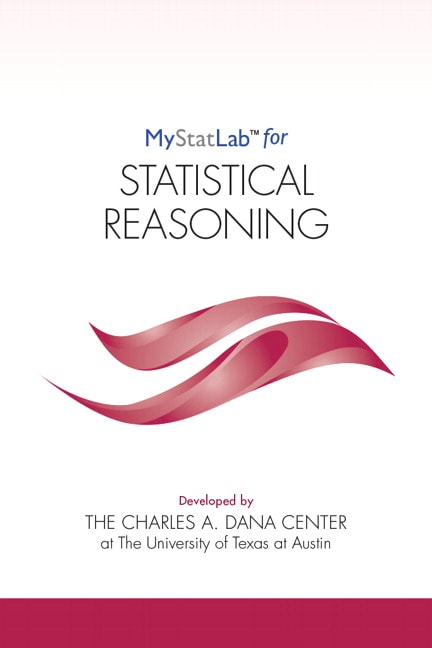
30.00$ - Pay Now
Category : Higher Education
The benefits of having the Test bank Files :
- save valuable Time while studying.
- improve your knowledge and grades.
- Avoid stress and frustration
- Get answers for your textbook end chapters.
Curriculum Overview Before the Semester Begins: Suggestions for Prep Week Lesson 1: Introduction to Statistics 1.A: Birth Dates and Personality Traits 1.B: Our Learning Community 1.C: Statistical Investigations 1.D: The Statistical Analysis Process 1.E: Types of Statistical Studies and Scope of Conclusions Lesson 2: Sampling 2.A: Collecting Data by Sampling 2.B: Random Sampling 2.C: Other Sampling Methods (Optional) 2.D: Sources of Bias in Sampling Lesson 3: Experiments 3.A: Planning an Experiment 3.B: Random Assignment 3.C: Control Groups and Placebos 3.D: Drawing Conclusions from Statistical Studies 3.E: Forming Effective Study Groups Lesson 4: Univariate Data Displays and Measures of Center 4.A: Dotplots for Quantitative Data 4.B: Constructing Histograms for Quantitative Data 4.C: Weight Gain 4.D: Dotplots, Histograms, and Distributions Lesson 5: Variability 5.A: Variability Relative to the Mean 5.B: Boxplots 5.C: The Modified Boxplot 5.D: Do the Parties Differ? Lesson 6: Scatterplots and Correlation 6.A: Introduction to Two-Variable Relationships 6.B: Direction and Strength of the Relationship 6.C: Correlation Coefficient 6.D: Correlation and Cause-and-Effect Conclusions Lesson 7: Lines of Best Fit 7.A: Using Lines to Make Predictions 7.B: Exploring Lines of Best Fit 7.C: Least Squares Regression (LSR) Line 7.D: Impact of Outliers on Correlations and Regression Lesson 8: Least Squares Regression Line 8.A: Investigating the Numbers in a Line’s Equation 8.B: Building the LSR Line’s Equation (Optional) 8.C: Determining If a Line Is a Good Fit 8.D: Determining If a Line Is an Appropriate Model Lesson 9: Bivariate Categorical Data 9.A: Categorical Data and Two-Way Tables 9.B: Comparative Bar Charts 9.C: Case Study Lesson 10: Probability 10.A: Introduction to Probability 10.B: Study on Blood Pressure 10.C: Probability Rules 10.D: Conditional Probability and Independence 10.E: The Multiplication and Addition Rules Lesson 11: Probability Distributions 11.A: Simulation 11.B: Probability Distributions of Discrete Random Variables 11.C: Probability Distributions of Continuous Random Variables 11.D: Constructing Probability Distributions Lesson 12: The Normal Distribution 12.A: The Normal Distribution 12.B: z-Scores and Normal Distributions 12.C: Probability and Critical Values 12.D: Probability and Critical Values (continued) Lesson 13: Sampling Variability 13.A: Sampling Variability 13.B: What Is a Sampling Distribution? 13.C: The Sampling Distribution of a Sample Proportion 13.D: Effect of Sample Size and the Value of the Population Proportion 13.E: The Standard Error Lesson 14: Estimating a Population Proportion 14.A: Estimating a Population Proportion 14.B: Calculating a Margin of Error 14.C: Evaluating a Claim–Part 1 14.D: Evaluating a Claim–Part 2 Lesson 15: Confidence Intervals for a Population Proportion 15.A: Confidence Intervals and Confidence Levels 15.B.A: Confidence Interval for a Population Proportion 15.C: Interpreting Confidence Intervals and Margin of Error Lesson 16: Hypothesis Testing About a Population Proportion 16.A: The Logic of Hypothesis Testing 16.B: Steps in Hypothesis Testing 16.C: Testing Hypotheses About a Population Proportion–Part 1 16.D: Testing Hypotheses About a Population Proportion–Part 2 Lesson 17: Sampling Distribution of a Sample Mean 17.A: Sampling Distribution of a Sample Mean 17.B: Effect of Sample Size and Variability in the Population 17.C: General Properties of the Sampling Distribution of a Sample Mean Lesson 18: Inference About a Population Mean 18.A: t-Distributions 18.B: One Sample Confidence Interval for a Population Mean–Part 1 18.C: One Sample Confidence Interval for a Population Mean–Part 2 18.D: One Sample Hypothesis Test for a Population Mean–Part 1 18.E: One Sample Hypothesis Test for a Population Mean–Part 2 Lesson 19: Comparing Two Populations 19.A: Hypotheses About a Difference in Population Means or Proportions 19.B: Two-Sample Test for a Difference in Population Proportions 19.C: Paired Versus Independent Samples 19.D: Two-Sample Test for a Difference in Population Means Using Independent Samples 19.E: Inference for Paired Samples 19.F: Two-Sample Confidence Interval for a Difference in Population Proportions 19.G: Two-Sample Confidence Interval for a Difference in Population Means Lesson 20: Analysis of Categorical Data: Chi-Square Goodness of Fit (Optional) 20.A: Quantifying the Strength of the Evidence 20.B: Conducting the Chi-Square Test 20.C: The Chi-Square Test and Degrees of Freedom Lesson 21: Analysis of Categorical Data: Chi-Square Tests for Two-Way Tables (Optional) 21.A: Introduction to Chi-Square Tests for Two-Way Tables 21.B: Chi-Square Test for Independence 21.C: Chi-Square Test for Homogeneity Lesson 22: Inference for Regression (Optional) 22.A: Sampling Distributions of Sample Slopes 22.B: Confidence Intervals for a Population Slope 22.C: Testing Claims About a Population Slope Lesson 23: One-Way Analysis of Variance (Optional) 23.A: One-Way Analysis of Variance–Equal Sample Sizes 23.B: One-Way Analysis of Variance–Unequal Sample Sizes 23.C: Interpreting a One-Way Analysis of Variance Answers (Odd) Resources Table of Contents
Glossary
***THIS IS NOT THE ACTUAL BOOK. YOU ARE BUYING the Test Bank in e-version of the following book***
- Digital File Direct & Fast Download ( Bank Exam ZIP & PDF) only for 30.00$
- All chapters are included in the test Bank Exam
- Free samples included once needed (ZIP & PDF)
- Multiple payment options (Paypal , Credit Card) - NO account Required
- Dedicatedsupport / instant chat – Email - Whatsapp
0 commentaires:
Enregistrer un commentaire